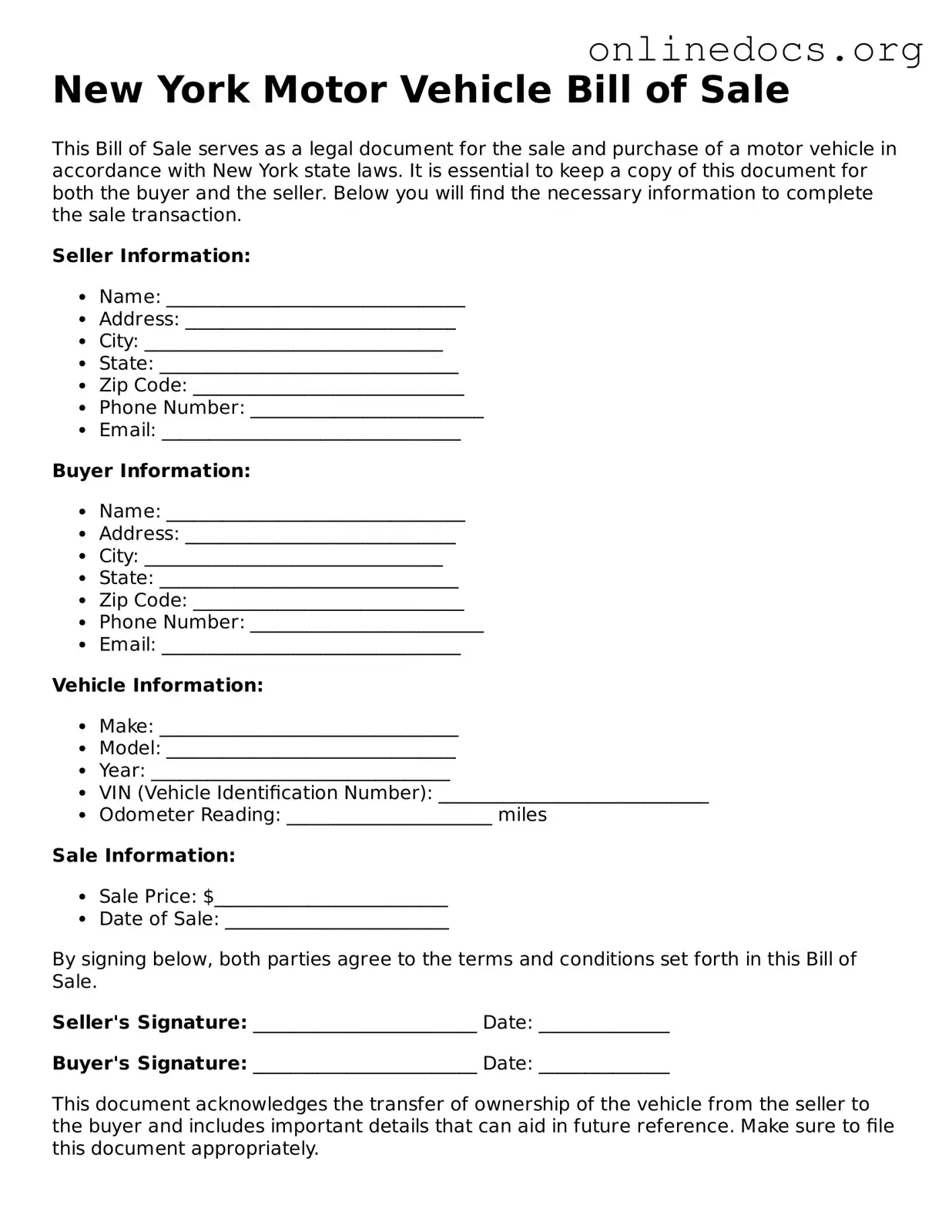When individuals fill out the New York Motor Vehicle Bill of Sale form, several common mistakes can occur. These errors can lead to confusion or complications when transferring vehicle ownership. Understanding these pitfalls can help ensure a smoother transaction.
One frequent mistake is failing to provide complete information about the vehicle. This includes not including the Vehicle Identification Number (VIN), which is crucial for identifying the specific vehicle. Omitting this detail can cause issues later when registering the vehicle or when verifying ownership.
Another common error involves inaccurate mileage reporting. Buyers and sellers must note the odometer reading at the time of sale. Inaccurate mileage can lead to disputes regarding the vehicle's condition and value. It is essential to double-check this figure before submitting the form.
People sometimes overlook the need for both parties to sign the document. The seller's signature is vital, but the buyer's signature is equally important. Without both signatures, the bill of sale may not be considered valid, complicating the ownership transfer process.
Additionally, some individuals fail to date the form properly. The date of the transaction is important for legal records and may affect the transfer of ownership. It is advisable to ensure that the date is clearly indicated to avoid any misunderstandings.
Another mistake involves not providing adequate contact information for both the buyer and the seller. Clear communication can prevent issues down the line. Including full names, addresses, and phone numbers is recommended to facilitate future correspondence if needed.
People sometimes neglect to include the purchase price of the vehicle. This figure is not just a number; it serves as a record of the transaction and may be necessary for tax purposes. Leaving this field blank can lead to complications when registering the vehicle with the Department of Motor Vehicles.
Some individuals may also use unclear language or abbreviations that can create confusion. It is best to use complete words and phrases to ensure that all information is easily understood. Clarity is key in legal documents to prevent any misinterpretations.
Another mistake is not keeping a copy of the completed bill of sale. After signing, both parties should retain a copy for their records. This document serves as proof of the transaction and can be helpful if disputes arise later.
Lastly, individuals sometimes forget to check the form for errors before submission. Simple typos or mistakes can lead to significant issues. Taking the time to review the form carefully can save both parties from potential headaches in the future.
